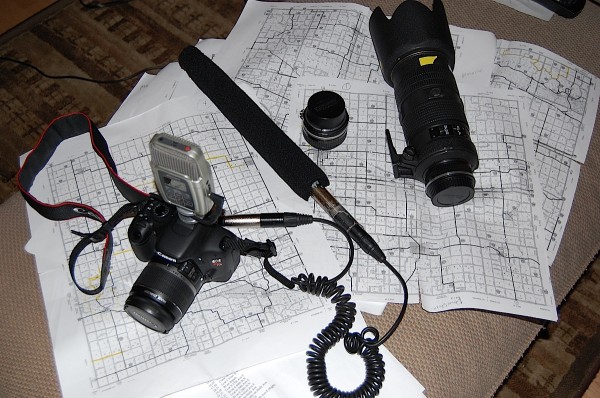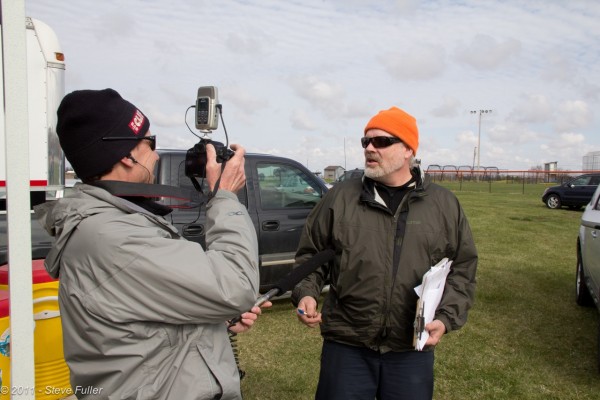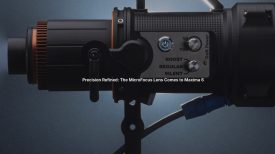Guest post by Jeff Frings:
300 Miles of Gravel Trailer from Jeff Frings Photography on Vimeo.
I have been a photojournalist working in local television news for a little over 20 years and have always been eager to exploit new technologies to tell stories. I’ve been using GoPro cameras and video from point-and-shoot cameras in stories for a few years. I was blown away with the possibilities that DSLR video presented when I saw Vincent Laforet’s Reverie.
I am also an avid cyclist, and a teammate of mine had done a road event called the Trans Iowa a few years ago; I thought it would make an interesting story. Little did I know when I started this documentary in 2011 that it would go on to win a Chicago regional area Emmy for outstanding sports programming.
Since this race is so hard, riders don’t usually spend a lot of time taking video as they ride and because of the nature of the race, there isn’t a lot of spectator shot video either. The race is totally self-supported, meaning that riders have to carry everything they will need that they can’t buy at a convenience store on the route. I wanted to try and film this project in a similar spirit, although it would have been crazy to do this shoot without at least someone to drive while I shot. I did all the shooting myself, except for a few car mount shots that my wife handled while I was at the start of the race. My wife did all the driving while I shot from the car or got out to set up for shots.

This was my first time shooting anything like this with a DSLR and it was a pretty easy transition from the Sony EX-3 I use in my day to day shooting. My primary camera was a Canon t2i with a Nikon 50mm f1.4, Nikon 80-200mm f2.8, a Nikon 300mm f2.8 with a 1.4x converter, and occasionally the stock kit 18-55mm canon lens. I also used a GoPro and a Canon SX200 point and shoot.
The audio was a bit more of a challenge but I figured it out pretty quickly. I used a Zoom H2 audio recorder with a Audio Technica AT835a shotgun mic, Audio Technica lavalier and an Electrovoice CO-90 lavalier.
The race started at 4 am in downtown Grinnell, Iowa and headed out of town very quickly. I brought some LED lights along as I knew all the light I would have near the start would be the headlights from the riders, but never used them because the camera was so good in low light I could get away with just the lights from the riders’ helmets. After the start, we followed the back of the race for a while and then jumped ahead to get some action from the leaders. That was how we worked for the bulk of the 34 hours: We would shoot at the front, wait for the lead two groups to come through and then jump ahead to another good shooting location. I didn’t have time to do any scouting but the race organizer pointed out some good locations once I told him what I was looking for. I did also shoot some video – on the GoPro and the point-and-shoot – while on my bike riding with the racers.
The racers get a sheet with written directions for the first 50 miles and then get more directions when they get to two checkpoints, if they get there before the time cutoff. We had all the directions, and I had large county maps printed out so I could plot our course and estimate where we could catch the leaders or the back of the pack.
The shoot was very similar to shooting a “run and gun” style daily news story. The racers don’t get into town until the night before the race and once it starts they get spread out along the course.

That forced me to shoot almost all of the interviews at the pre-race meeting, which was noisy. I used the shotgun mic for these interviews and they were not too bad considering the clamour of the room with about 200 people all talking at once. I did have time to set up some shots and wait for the riders but would have preferred more control. I’m looking forward to some projects that allow me to set up more shots and take full advantage of the look that can be achieved with these cameras.
While there have been many new cameras and gadgets since I made 300 Miles of Gravel, I think it proves what can be done with a relatively simple set-up and a well planned approach.
I was a little apprehensive about the project at the outset, but now I’m very glad I did it as the finished documentary has since been aired on a local Fox affiliate in Milwaukee, picked up the regional Emmy and is tentatively scheduled to air on Iowa public TV in April.
You can find out more about the project one on this website.
Due to numerous requests the documentary is now also available to buy here.






